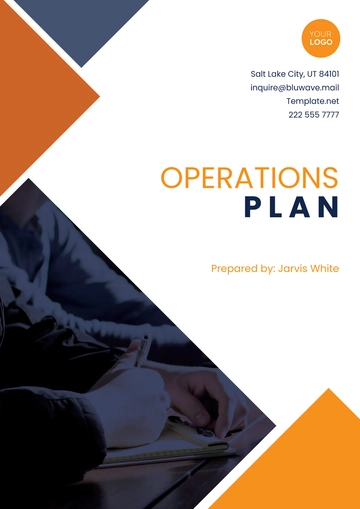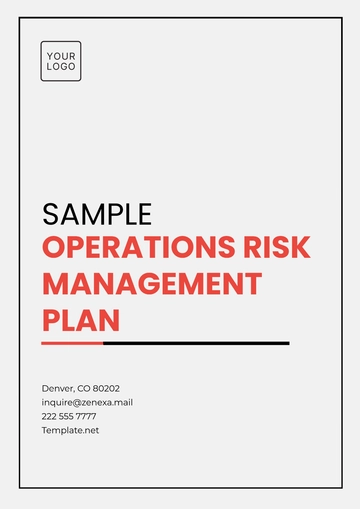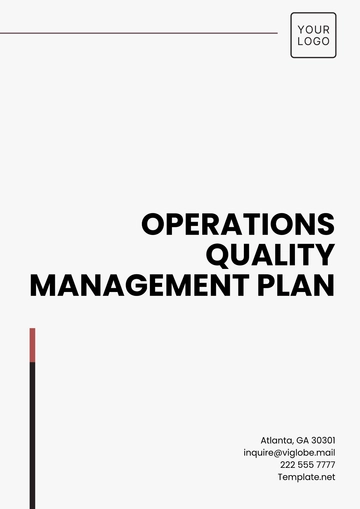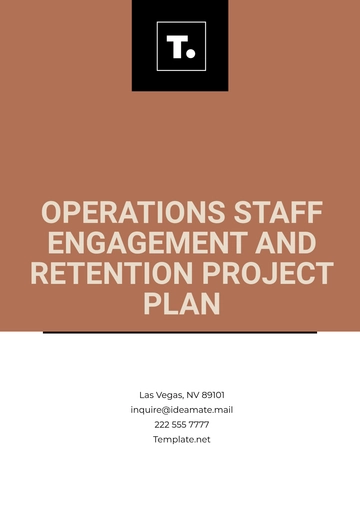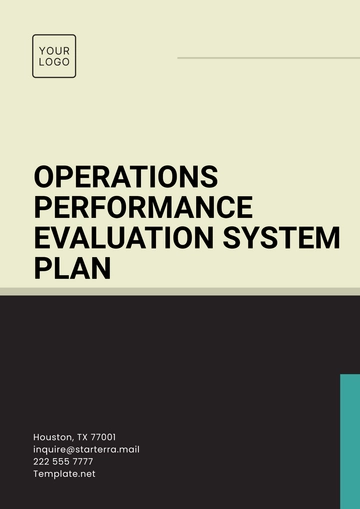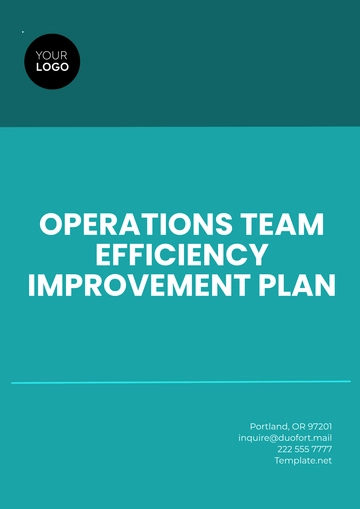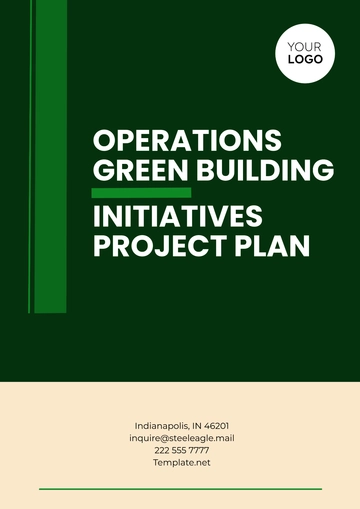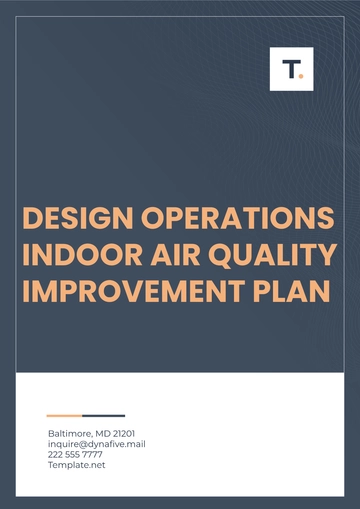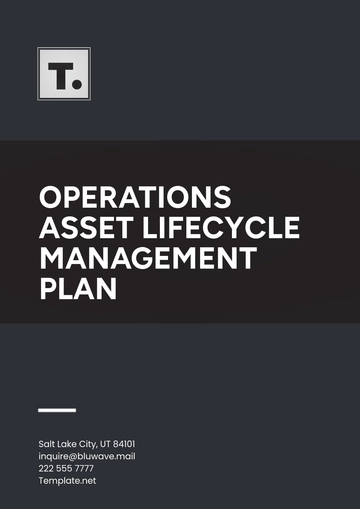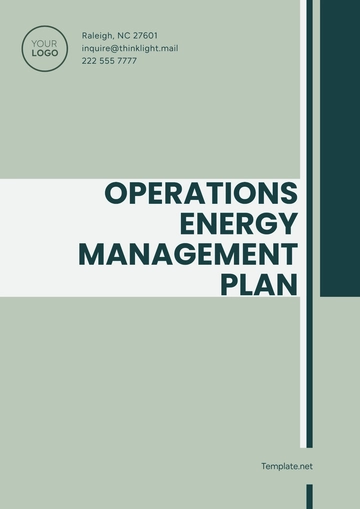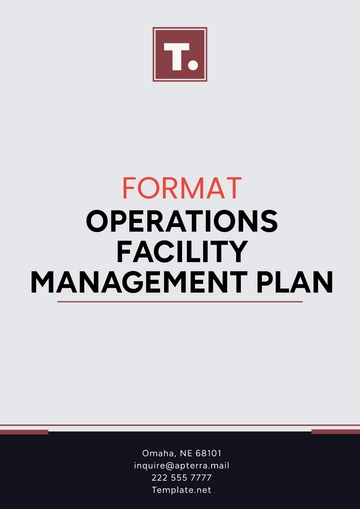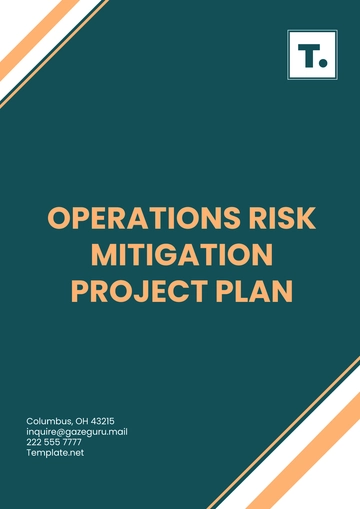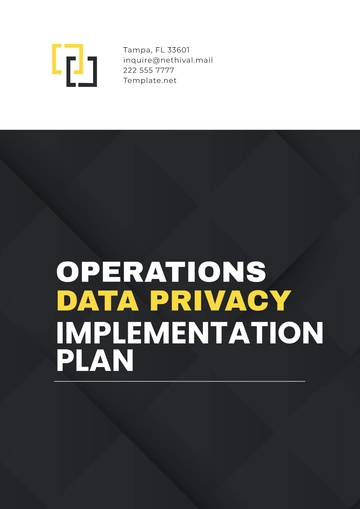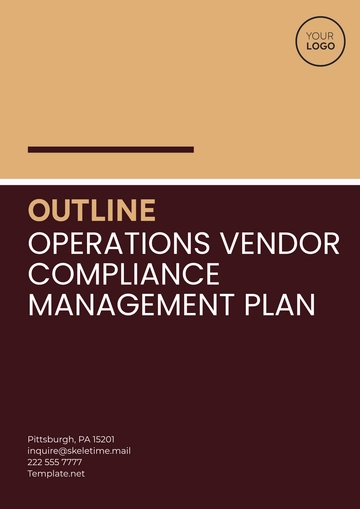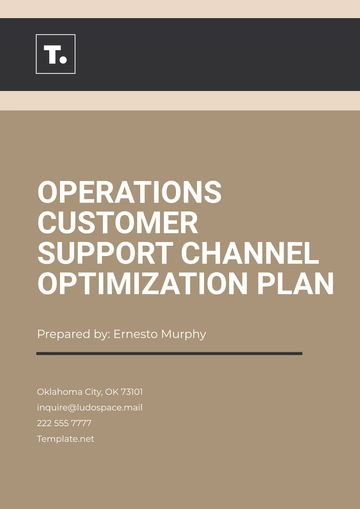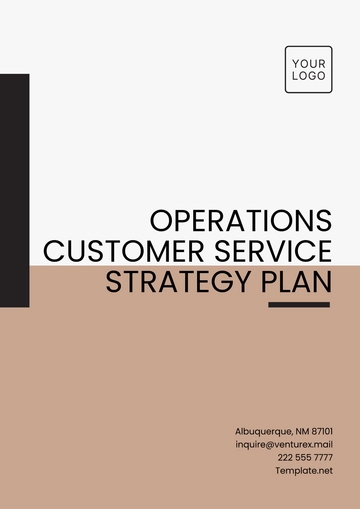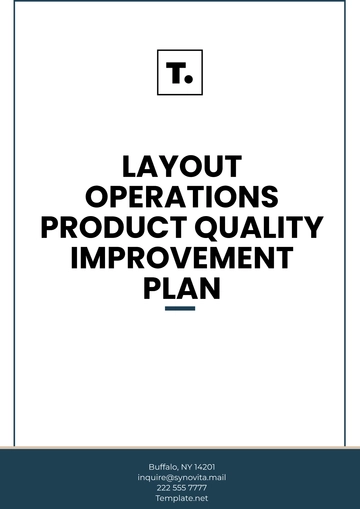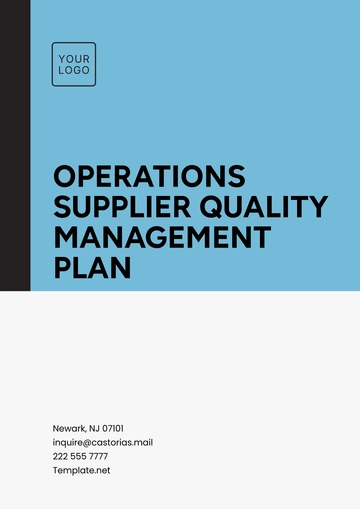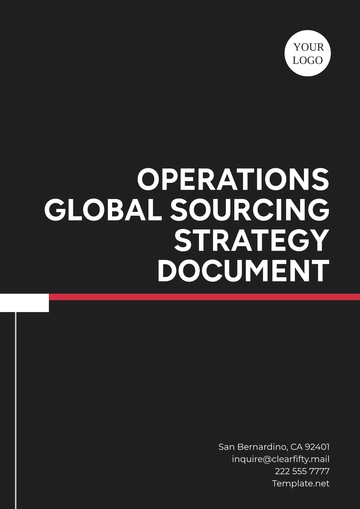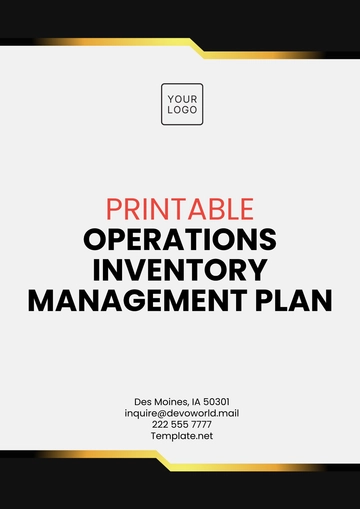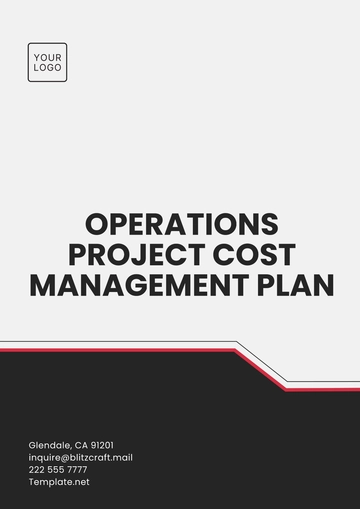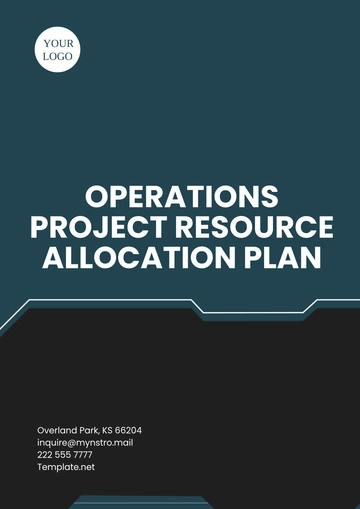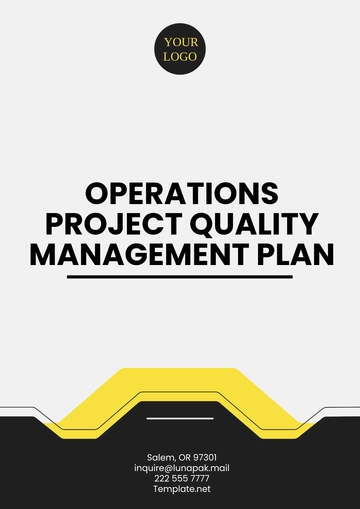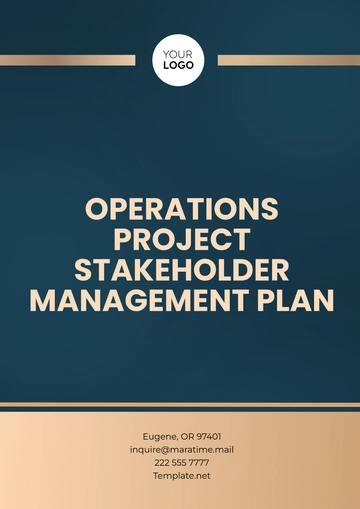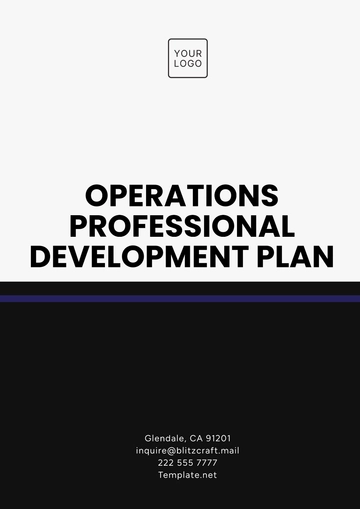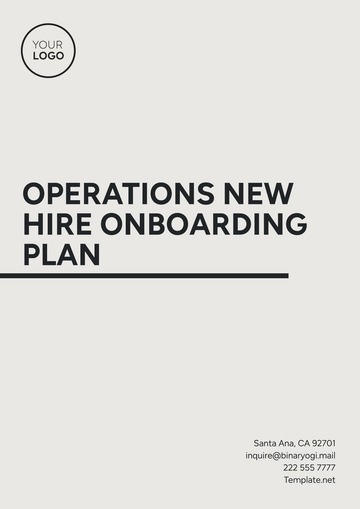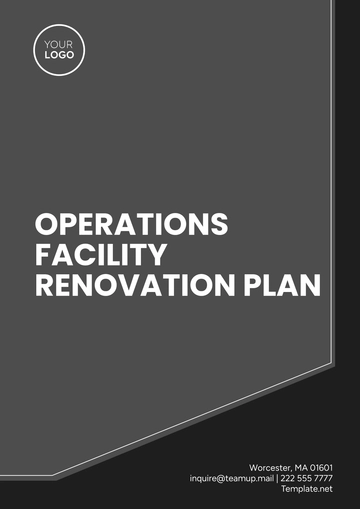Free Logistics Company Procurement Plan
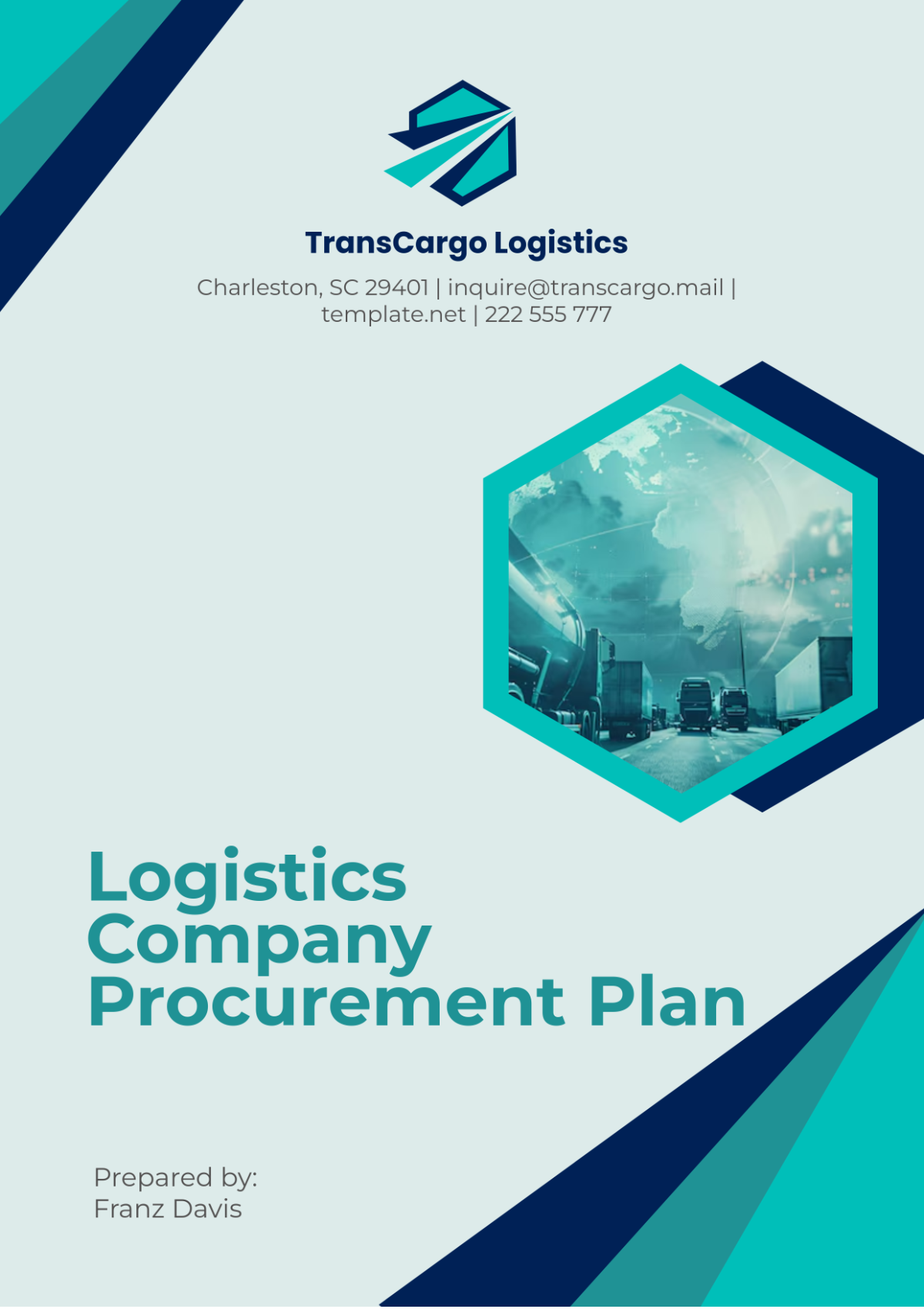
1. Introduction
1.1 Overview of the Procurement Plan
The purpose of the Procurement Plan is to outline the procurement strategies, objectives, and policies for [Your Company Name] as it aims to achieve efficient supply chain operations in the year [2050] and beyond. This comprehensive plan is designed to ensure the timely and cost-effective acquisition of goods, services, and resources that align with the company's logistics goals and operational requirements. By establishing clear guidelines and standards, this plan seeks to create a cohesive framework that supports interdepartmental collaboration and maximizes operational efficiency. The plan is applicable to all departments within the organization, serving as a central reference point for procurement-related activities, thus fostering transparency and accountability in all purchasing decisions. This approach will help mitigate risks and enhance the overall performance of the procurement function.
1.2 Goals and Objectives
The primary objectives of this Procurement Plan are to:
Ensure cost-effective procurement practices while maintaining high-quality standards across all logistical assets. This involves regularly reviewing and negotiating supplier contracts to identify savings opportunities without compromising quality. Cost management will be a continuous process, allowing the organization to adapt to changing market conditions, economic fluctuations, and shifts in supplier capabilities.
Enhance vendor relationships to promote reliability, flexibility, and mutual growth. Building strong partnerships with suppliers will allow for more responsive service and innovation, which can lead to better pricing and terms in future negotiations. Regular communication and collaboration will be key to fostering these relationships, including scheduled meetings and performance reviews.
Reduce environmental impact by adopting sustainable procurement practices that align with global environmental standards and the increasing demand for corporate social responsibility. This includes setting clear sustainability goals, such as reducing carbon footprints and ensuring that all procurement activities contribute positively to environmental outcomes. By focusing on eco-friendly suppliers and materials, [Your Company Name] can significantly enhance its sustainability profile.
Leverage technology to streamline procurement processes, improving efficiency and transparency. By utilizing advanced software and automation tools, [Your Company Name] can enhance decision-making, reduce errors, and ensure compliance with procurement policies. The integration of artificial intelligence and data analytics will further support these efforts, allowing for more informed procurement decisions.
1.3 Scope
This Procurement Plan covers the acquisition of all resources, services, and supplies required for operations, including:
Vehicles and transportation equipment, essential for maintaining an efficient logistics network and ensuring timely deliveries to clients. This includes not only trucks and delivery vans but also technological equipment like GPS systems that enhance route efficiency.
Warehouse materials and supplies, which are critical for effective inventory management and storage solutions. These supplies may encompass shelving, pallets, and packaging materials that contribute to streamlined operations within warehouses.
Technology infrastructure and software that facilitate communication, data analysis, and inventory tracking across the supply chain. This could involve purchasing or leasing advanced warehouse management systems that integrate seamlessly with existing operations.
Personnel-related services, which include training, recruitment, and outsourcing options to support staffing needs. Investing in staff training and development is essential for ensuring that employees are well-equipped to handle evolving logistical challenges.
Environmental and sustainable resources, ensuring that all materials used in operations are sourced responsibly and ethically. This may involve sourcing recyclable materials and working with suppliers who prioritize sustainable practices.
2. Procurement Strategy
2.1 Strategic Sourcing
Strategic sourcing will be implemented by [Your Company Name] to develop strong, long-term relationships with key suppliers and leverage bulk purchasing. This approach involves a thorough analysis of the procurement landscape to identify the most beneficial supplier relationships. Strategic sourcing will be vital in:
Identifying reliable suppliers based on quality, cost, and sustainability. This will involve comprehensive market research and assessment of potential suppliers to ensure they meet our standards and align with our strategic objectives.
Negotiating multi-year contracts to secure favorable pricing and terms, targeting cost reductions of at least [5%-10%] annually. Long-term contracts will also help stabilize pricing and supply availability, reducing the risk of market fluctuations and enhancing predictability in budgeting.
Regularly reviewing supplier performance through key performance indicators (KPIs), including delivery times, quality compliance, and cost management. Performance reviews will facilitate ongoing communication and adjustments to supplier agreements as necessary, ensuring alignment with evolving business needs.
2.1.1 Supplier Segmentation
[Your Company Name] categorizes suppliers into three main segments based on strategic importance and operational impact:
Strategic Suppliers: These are critical suppliers that provide high-value or high-risk goods, such as vehicle manufacturers or technology providers. These suppliers receive top-tier management attention and are integral to the company's operational success, often requiring in-depth collaboration and communication.
Core Suppliers: These providers offer essential but non-critical goods, including warehouse supplies and packaging materials. While not as critical as strategic suppliers, maintaining strong relationships with core suppliers is important for smooth operations and ensuring that the supply chain remains uninterrupted.
Transactional Suppliers: These suppliers are associated with low-value, low-risk goods that are readily available and often commoditized. These relationships require less management but are important for day-to-day operations, and any issues in this segment can still lead to operational disruptions.
2.2 Sustainable Procurement
To support environmental initiatives, [Your Company Name] will prioritize suppliers that adopt eco-friendly practices. Sustainable procurement goals for [2050] include:
Targeting a [30%] reduction in carbon emissions by partnering with green-certified suppliers. This will involve establishing criteria for supplier selection based on their environmental impact and sustainability practices, as well as implementing strategies that promote the use of renewable energy sources.
Promoting reusable packaging and reducing reliance on single-use plastics. By encouraging suppliers to adopt more sustainable packaging solutions, [Your Company Name] can contribute to a reduction in overall waste, thus enhancing its corporate social responsibility profile.
Setting environmental compliance requirements for all suppliers, with penalties for non-compliance. Regular audits will ensure that suppliers adhere to environmental standards, helping [Your Company Name] maintain its commitment to sustainability while also protecting its brand reputation.
3. Procurement Process
3.1 Procurement Cycle
The procurement cycle will follow a structured approach to ensure effective resource acquisition. Each phase is designed to minimize risks and maximize efficiency:
Requirement Identification: Departments submit requests detailing their needs, specifying quality, quantity, and delivery timelines. This phase will involve cross-departmental collaboration to ensure all needs are accurately captured and prioritized based on operational requirements.
Supplier Selection and Evaluation: Procurement officers assess suppliers based on competitive quotes, performance history, and sustainability credentials. A detailed scoring system will be implemented to evaluate potential suppliers objectively, ensuring that the most suitable vendors are chosen for each procurement.
Negotiation and Contracting: Final terms, pricing, and contract durations are negotiated, with legal support as needed. This step will include a thorough review of contract terms to safeguard [Your Company Name]'s interests, focusing on ensuring favorable conditions for both parties.
Order Placement and Monitoring: Orders are placed, and delivery timelines are tracked to ensure compliance. Effective communication with suppliers will be essential to address any potential delays promptly and mitigate the impact on operational schedules.
Quality Control and Payment: Goods are inspected upon arrival to ensure quality standards, and payments are released as per contract terms. Quality control measures will help maintain the integrity of operations, fostering trust and reliability in the procurement process.
Performance Review: Suppliers are evaluated post-delivery for adherence to quality, cost, and timeline expectations. Feedback from departments will inform future procurement decisions and supplier selections, creating a cycle of continuous improvement.
3.1.1 Supplier Evaluation Metrics
Metrics used to evaluate suppliers include:
Cost Effectiveness: Targeting a minimum [5%] reduction in procurement costs annually through strategic negotiations and efficient sourcing strategies. This goal reflects [Your Company Name]'s commitment to maintaining financial sustainability while ensuring operational excellence.
Delivery Timeliness: Targeting a [95%] on-time delivery rate to ensure that all goods arrive when needed, preventing disruptions in the supply chain. Consistent on-time delivery is crucial for maintaining operational continuity and customer satisfaction.
Quality Compliance: Ensuring a [99%] quality adherence rate to maintain high standards for all procured goods. This metric will be critical in ensuring that [Your Company Name] meets its quality assurance goals and maintains customer trust.
3.2 Technological Integration
By [2050], [Your Company Name] aims to fully integrate AI-based procurement systems to enhance the accuracy and speed of the procurement process. Key technology implementations include:
Automated Supplier Matching: Utilizing AI to match requirements with qualified suppliers efficiently. This technology will streamline the sourcing process, allowing for quicker decision-making and reducing the workload on procurement staff.
Blockchain for Transparency: Recording procurement transactions on a blockchain ledger to enhance transparency and traceability. This will improve accountability throughout the supply chain, making it easier to track the provenance of goods and ensuring compliance with regulatory requirements.
Predictive Analytics: Leveraging data to forecast demand trends and optimize procurement cycles. By analyzing historical data and market trends, [Your Company Name] can anticipate future needs and adjust procurement strategies accordingly, thus enhancing responsiveness and agility.
4. Supplier Management and Performance
4.1 Supplier Relationship Management (SRM)
SRM practices will prioritize collaboration, risk management, and continuous improvement. [Your Company Name] will:
Implement joint planning initiatives with key suppliers to improve demand forecasting. Collaborative planning will allow for better alignment of production schedules and inventory management, resulting in more efficient operations and reduced costs.
Hold quarterly performance reviews to discuss areas for improvement. These reviews will facilitate open dialogue, allowing both parties to address challenges and explore new opportunities for collaboration that can lead to mutual growth.
Develop risk management strategies for critical suppliers to mitigate supply chain disruptions. This will include contingency planning, such as identifying alternative suppliers and establishing safety stock levels, to ensure business continuity.
4.2 Performance Monitoring
Performance metrics will include:
Timeliness of Deliveries: Targeting a [95%] on-time delivery rate. This key performance indicator (KPI) will provide insight into supplier reliability and help [Your Company Name] maintain smooth operations.
Cost Variance: Monitoring the variance between budgeted and actual costs to identify areas for potential savings. By analyzing cost data, the company can make informed decisions about future purchasing strategies and supplier negotiations.
Quality Metrics: Tracking defects or quality issues to maintain high standards across the supply chain. This data will guide supplier evaluations and drive continuous improvement initiatives.
5. Budget and Financial Planning
5.1 Procurement Budget Allocation
The total procurement budget for [Your Company Name] for [2050] is projected to be approximately [$50 million]. The allocation of this budget is as follows:
Category | Budget Amount | Percentage of Total |
|---|---|---|
Transportation Equipment | [$20 million] | [40%] |
Warehouse Operations | [$15 million] | [30%] |
Technology & Software | [$10 million] | [20%] |
Sustainability Initiatives | [$5 million] | [10%] |
Each category is essential to the overall functionality of [Your Company Name], ensuring that every aspect of operations is adequately funded and managed.
5.2 Cost Control Measures
To maintain fiscal responsibility, [Your Company Name] will implement several cost control measures:
Regular budget reviews to assess spending against allocations, ensuring that all departments adhere to their budgets. These reviews will provide an opportunity to identify and address discrepancies promptly, promoting accountability and financial discipline within the organization.
Use of competitive bidding to encourage price competition among suppliers. This process will ensure that [Your Company Name] secures the best possible prices and terms, ultimately driving down costs while maintaining quality standards. By attracting multiple bids, the company can leverage competition to its advantage.
Adoption of a just-in-time inventory system to minimize holding costs and reduce wastage. By receiving goods only as needed, the company can keep inventory levels low, significantly reducing storage costs and enhancing cash flow management.
6. Conclusion
6.1 Summary of Key Points
In conclusion, the Procurement Plan for [Your Company Name] outlines a comprehensive approach to achieving efficient, sustainable, and cost-effective procurement processes. By focusing on strategic sourcing, supplier relationship management, and technological integration, the company aims to establish a robust procurement framework that supports its logistics operations in [2050] and beyond. Key takeaways include:
A commitment to sustainability and responsible sourcing practices, ensuring that procurement decisions are aligned with broader environmental goals.
The use of advanced technology to streamline procurement processes, enhancing efficiency and transparency.
Strong supplier relationships that foster collaboration and innovation, allowing for better pricing and terms in future negotiations.
6.2 Future Outlook
As [Your Company Name] moves forward, it will continuously adapt to changes in the market, technology, and regulatory landscape. The Procurement Plan will remain a living document, regularly updated to reflect new insights, industry trends, and internal performance metrics. By remaining proactive and flexible, [Your Company Name] is well-positioned to lead the logistics industry into a sustainable and efficient future. Emphasizing agility in procurement strategies will enable the company to respond effectively to market fluctuations and customer demands, ensuring long-term success and resilience. With ongoing investments in technology, sustainability, and supplier relationships, [Your Company Name] is committed to achieving excellence in procurement, setting industry standards, and creating a positive impact on the global logistics landscape.
- 100% Customizable, free editor
- Access 1 Million+ Templates, photo’s & graphics
- Download or share as a template
- Click and replace photos, graphics, text, backgrounds
- Resize, crop, AI write & more
- Access advanced editor
Organize purchases with the Logistics Company Procurement Plan Template from Template.net. This editable and customizable template outlines sourcing, budgeting, and timelines. Customize it in our Ai Editor Tool to streamline procurement processes.
You may also like
- Finance Plan
- Construction Plan
- Sales Plan
- Development Plan
- Career Plan
- Budget Plan
- HR Plan
- Education Plan
- Transition Plan
- Work Plan
- Training Plan
- Communication Plan
- Operation Plan
- Health And Safety Plan
- Strategy Plan
- Professional Development Plan
- Advertising Plan
- Risk Management Plan
- Restaurant Plan
- School Plan
- Nursing Home Patient Care Plan
- Nursing Care Plan
- Plan Event
- Startup Plan
- Social Media Plan
- Staffing Plan
- Annual Plan
- Content Plan
- Payment Plan
- Implementation Plan
- Hotel Plan
- Workout Plan
- Accounting Plan
- Campaign Plan
- Essay Plan
- 30 60 90 Day Plan
- Research Plan
- Recruitment Plan
- 90 Day Plan
- Quarterly Plan
- Emergency Plan
- 5 Year Plan
- Gym Plan
- Personal Plan
- IT and Software Plan
- Treatment Plan
- Real Estate Plan
- Law Firm Plan
- Healthcare Plan
- Improvement Plan
- Media Plan
- 5 Year Business Plan
- Learning Plan
- Marketing Campaign Plan
- Travel Agency Plan
- Cleaning Services Plan
- Interior Design Plan
- Performance Plan
- PR Plan
- Birth Plan
- Life Plan
- SEO Plan
- Disaster Recovery Plan
- Continuity Plan
- Launch Plan
- Legal Plan
- Behavior Plan
- Performance Improvement Plan
- Salon Plan
- Security Plan
- Security Management Plan
- Employee Development Plan
- Quality Plan
- Service Improvement Plan
- Growth Plan
- Incident Response Plan
- Basketball Plan
- Emergency Action Plan
- Product Launch Plan
- Spa Plan
- Employee Training Plan
- Data Analysis Plan
- Employee Action Plan
- Territory Plan
- Audit Plan
- Classroom Plan
- Activity Plan
- Parenting Plan
- Care Plan
- Project Execution Plan
- Exercise Plan
- Internship Plan
- Software Development Plan
- Continuous Improvement Plan
- Leave Plan
- 90 Day Sales Plan
- Advertising Agency Plan
- Employee Transition Plan
- Smart Action Plan
- Workplace Safety Plan
- Behavior Change Plan
- Contingency Plan
- Continuity of Operations Plan
- Health Plan
- Quality Control Plan
- Self Plan
- Sports Development Plan
- Change Management Plan
- Ecommerce Plan
- Personal Financial Plan
- Process Improvement Plan
- 30-60-90 Day Sales Plan
- Crisis Management Plan
- Engagement Plan
- Execution Plan
- Pandemic Plan
- Quality Assurance Plan
- Service Continuity Plan
- Agile Project Plan
- Fundraising Plan
- Job Transition Plan
- Asset Maintenance Plan
- Maintenance Plan
- Software Test Plan
- Staff Training and Development Plan
- 3 Year Plan
- Brand Activation Plan
- Release Plan
- Resource Plan
- Risk Mitigation Plan
- Teacher Plan
- 30 60 90 Day Plan for New Manager
- Food Safety Plan
- Food Truck Plan
- Hiring Plan
- Quality Management Plan
- Wellness Plan
- Behavior Intervention Plan
- Bonus Plan
- Investment Plan
- Maternity Leave Plan
- Pandemic Response Plan
- Succession Planning
- Coaching Plan
- Configuration Management Plan
- Remote Work Plan
- Self Care Plan
- Teaching Plan
- 100-Day Plan
- HACCP Plan
- Student Plan
- Sustainability Plan
- 30 60 90 Day Plan for Interview
- Access Plan
- Site Specific Safety Plan
